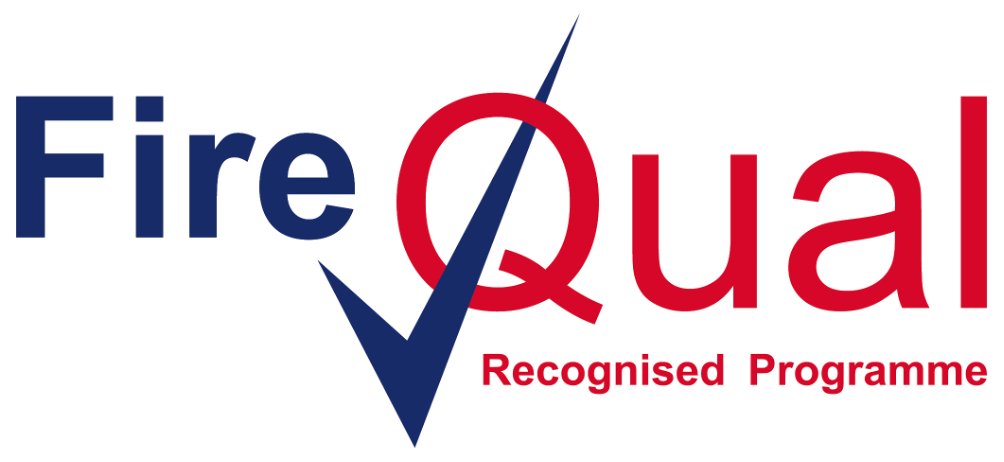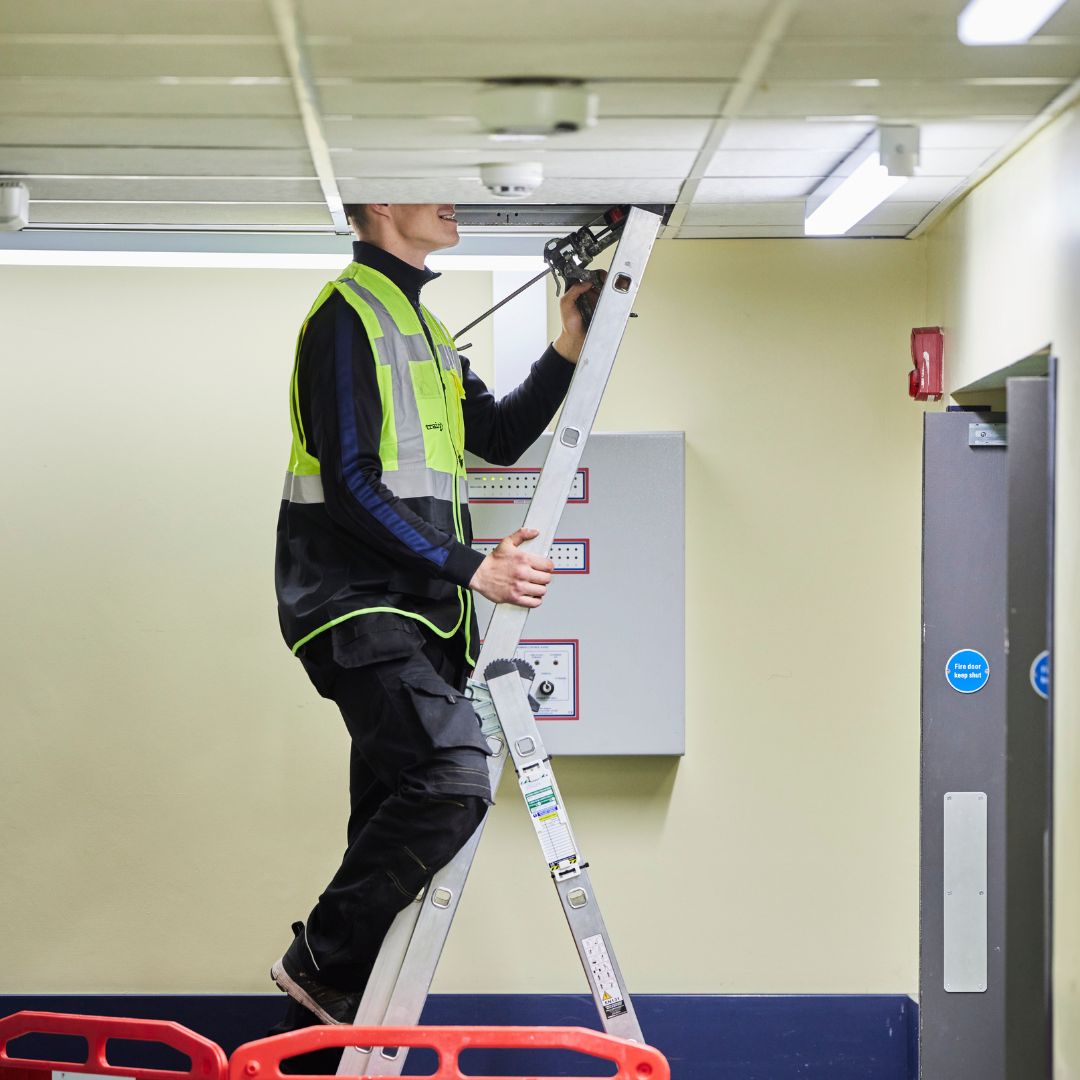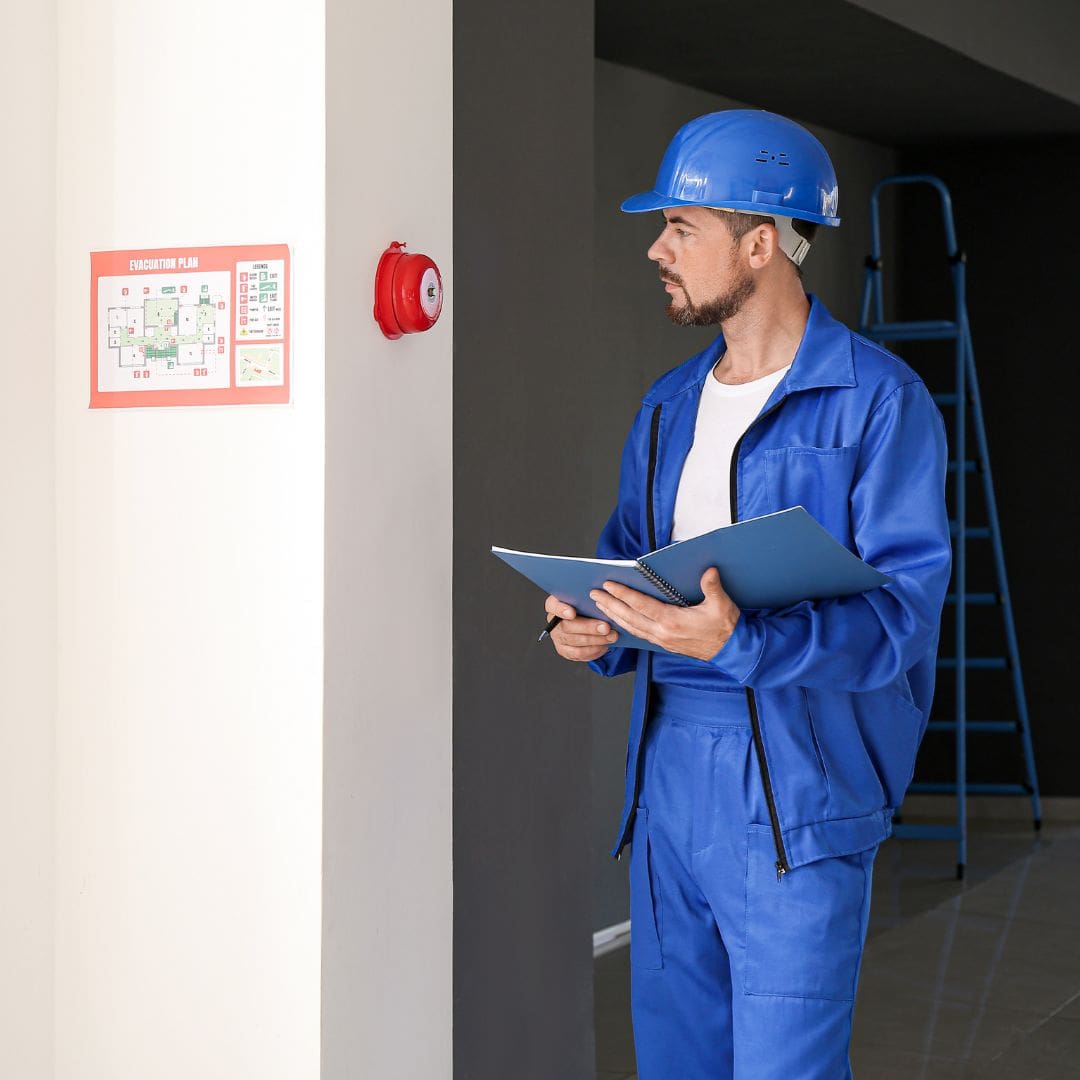Passive fire protection training courses
Breaking New Ground: UK’s First Virtual Reality Fire-Stopping & Door Inspection Training
Passive Fire Protection Courses with trainingEXP
Picture yourself stepping into a virtual building, witnessing real-life fire scenarios and gaining invaluable skills. Discover potential fire hazards, understand material behaviour in fiery conditions, and practice implementing fire protection strategies with our Passive Fire Protection Courses.
Join us today on our 4-day passive fire protection advanced award, 2-day passive fire protection intermediate award, 2-day responsible person (fire safety) award course and more.
2-day Responsible Person (Fire Safety) award course

Course Description
This FireQual recognised course provides you with an in-depth understanding of the requirements to manage fire safety within buildings in line with the RRFSO (2005), Fire Safety Act 2021, Fire Safety England Regulations 2022, and the newly reformed Building Safety Act 2022. As an addition to the course, you will be giving an insight into Passive Fire Protection where you will learn about fire doors and fire-stopping.
Course Goal
The course will educate professionals who have a responsibility to Manage Fire Safety within Buildings. The learning program will give you the skills and knowledge to navigate yourself through the complex industry requirements and procedures. You will cover a range of regulatory standards which will help you excel within fire safety management.
You also learn critical elements of what it means to be a “Responsible Person” and what are the requirements in line with the Fire Safety (England) Regulations 2022 & The Building Safety Act 2022.


2-Day Passive Fire Protection Intermediate Award

Course Description
Looking for a complete understanding of fire protection and industry regulations? The 2-Day FireQual course is the go-to choice. With our guidance, you’ll learn all about passive fire protection products, installation requirements, and your duty of care.
This intermediate-level course is ideal for those in construction, engineering, and facilities management, as well as building owners, managers, and occupants. Whether you’re a beginner or an EXPerienced professional, we’ve got you covered with the knowledge you need to ensure fire safety and compliance.
Course Goal
Upon completion of this course, you will possess the essential knowledge and EXPertise to fully understand the crucial importance of protecting buildings from fire hazards. The ultimate goal of the course is to encourage adherence to safety regulations in various industries.
1-Day Understanding Timber Fire Doors, Maintenance & Inspection (HealthCare Buildings)

Course Description
The 1-Day course is EXPertly designed to equip delegates with the essential knowledge and skills needed to confidently inspect and maintain timber fire door systems in healthcare buildings. The programme covers all necessary regulatory requirements and guidance information, including the Regulatory Reform Fire Safety Order (RRFSO), Approved Document B, and the HTM 05-01, 02 & 03.
Moreover, the course provides EXPert guidance on sourcing fire door test evidence and implementing the best installation and maintenance practices, ensuring that delegates are fully equipped to promote fire safety compliance within their workplace.
Course Goal
This course aims to educate trades who work within the industry and anyone who has a role of responsibility which covers any aspect of fire doors. The course covers everything you need to know about fire door installation, maintenance, and inspection. We prioritise compliance with test specifications and British standards to meet regulatory requirements.


1-Day Understanding Timber Fire Door Installation, Maintenance & Inspection

Course Description
This highly esteemed 1-Day FireQual course is EXPertly designed to equip you with all the essential knowledge and skills necessary for efficient inspection, installation, and maintenance of timber fire door systems. The course covers essential information on regulatory requirements and guidance, including the Regulatory Reform Fire Safety Order (RRFSO), and Approved Document B.
The course will also provide delegates with information on where to source fire door test evidence and industry guidance for installation and maintenance.
Course Goal
The comprehensive course is tailored to educate individuals who have a role of responsibility within the fire door industry and trades alike. The focus is on providing you with all the necessary knowledge and skills to ensure efficient fire door installation, maintenance, and inspection. We prioritise adhering to British standards and regulations for your peace of mind.
4-Day Passive Fire Protection Advanced Award

Course Description
By enrolling in the 4-Day FireQual recognised course, you can have full confidence that you will gain an in-depth understanding of passive fire protection. The comprehensive programme covers a broad range of industry regulations, products, and scenarios relevant to the passive fire industry.
During the course, you will participate in group investigations and a virtual reality fault-finding survey that will immerse you in a site-based Hospital, enabling you to fully grasp the topics surrounding the industry.
Course Goal
This course is specifically designed to equip industry professionals with the knowledge and skills necessary to understand the importance of adequate fire protection for buildings.
The aim of the course is to promote compliance with fire safety regulations across various sectors, encouraging individuals and businesses to make informed decisions when it comes to protecting their premises from fire hazards.

Passive Fire FAQs
Passive Fire Protection refers to a specialised range of products, meticulously integrated into the structural fabric of buildings. The primary objective is to curtail and contain the spread of fire and smoke in the event of a potential outbreak.
To achieve this, Passive Fire Protection systems operate on several fronts:
- Protect key escape routes: By safeguarding essential escape routes, it allows occupants to evacuate the building without any hindrance.
- Contain fire and smoke: Fire outbreaks often occur in isolated compartments (rooms, corridors) before they spread to other areas. With Passive Fire Protection, fire and smoke are contained within the locality of the outbreak, limiting the hazards and saving lives.
- Protect the building’s structure: These systems are specifically designed to protect and preserve the building’s structural integrity. This ensures that the building remains standing, while limiting the scope and severity of any damage.
By highlighting the importance of passive fire protection and the benefits it provides, it is evident that investing in these systems is a wise decision. From protecting people to minimising property damage, Passive Fire Protection is a valuable asset in fire safety.
Fire safety measures can be broadly categorised into Active and Passive Fire Protection.
Passive Fire Protection involves systems and products integrated into the building’s structure. These systems work continuously without activation, inhibiting the spread of fire and smoke, and providing crucial time for safe evacuation.
Active Fire Protection, on the other hand, relies on systems that require activation. This includes fire alarms, sprinklers, extinguishers, mist systems, and fire dampers, which are triggered either by the presence of fire or manually.
By combining both Active and Passive Fire Protection strategies, you can establish comprehensive fire safety measures that effectively safeguard your building and its occupants.
Passive fire protection plays a crucial role in safeguarding buildings and their occupants, and the British Standard BS476: 1987 sets the industry standard for testing and certifying passive fire protection products.
This widely recognised standard outlines the fire tests performed on building materials and structures and specifies the time/temperature profile for testing fire-resistant materials under different fire conditions. Products tested and certified according to this standard provide invaluable peace of mind, assuring that they meet the necessary performance requirements and provide adequate protection in the event of a fire outbreak.
In summary, adhering to the British Standard BS476: 1987 for Passive Fire Protection ensures the highest level of testing, certification, and safety of your building and its occupants.
Passive fire protection encompasses a range of crucial measures designed to inhibit the spread of fire and smoke within buildings. Here are some of the most common types:
- Fire Rated Walls, Ceilings, and Floors: These specialised structures are constructed with fire-resistant materials to create effective barriers, preventing the rapid spread of flames and smoke between different areas of a building.
- Fire Curtains (Barriers): Fire curtains act as flexible barriers that automatically deploy in the event of a fire. These curtains effectively contain the fire, control its spread, and provide additional time for safe evacuation.
- Cavity Barriers: Installed in wall cavities, ceiling voids, and floor voids, cavity barriers are essential in preventing the hidden spread of fire. These barriers act as seals, limiting the movement of flames and smoke within concealed spaces.
- Penetration Sealing Systems: Fire batts or fire-resistant materials are used to seal openings and penetrations in walls, ceilings, and floors. By effectively sealing these openings, the risk of fire and smoke spreading through gaps is minimised.
- Linear Sealing Joints: Linear sealing joints are specialised systems applied to joints and gaps in structures. These joints expand when exposed to high temperatures, creating effective seals that restrict the passage of fire and smoke.
These common types of Passive Fire Protection demonstrate the diverse range of measures used to enhance fire safety. By integrating these systems, buildings are equipped with effective defenses against the spread of fire, providing valuable time for evacuation and minimising potential damage.


